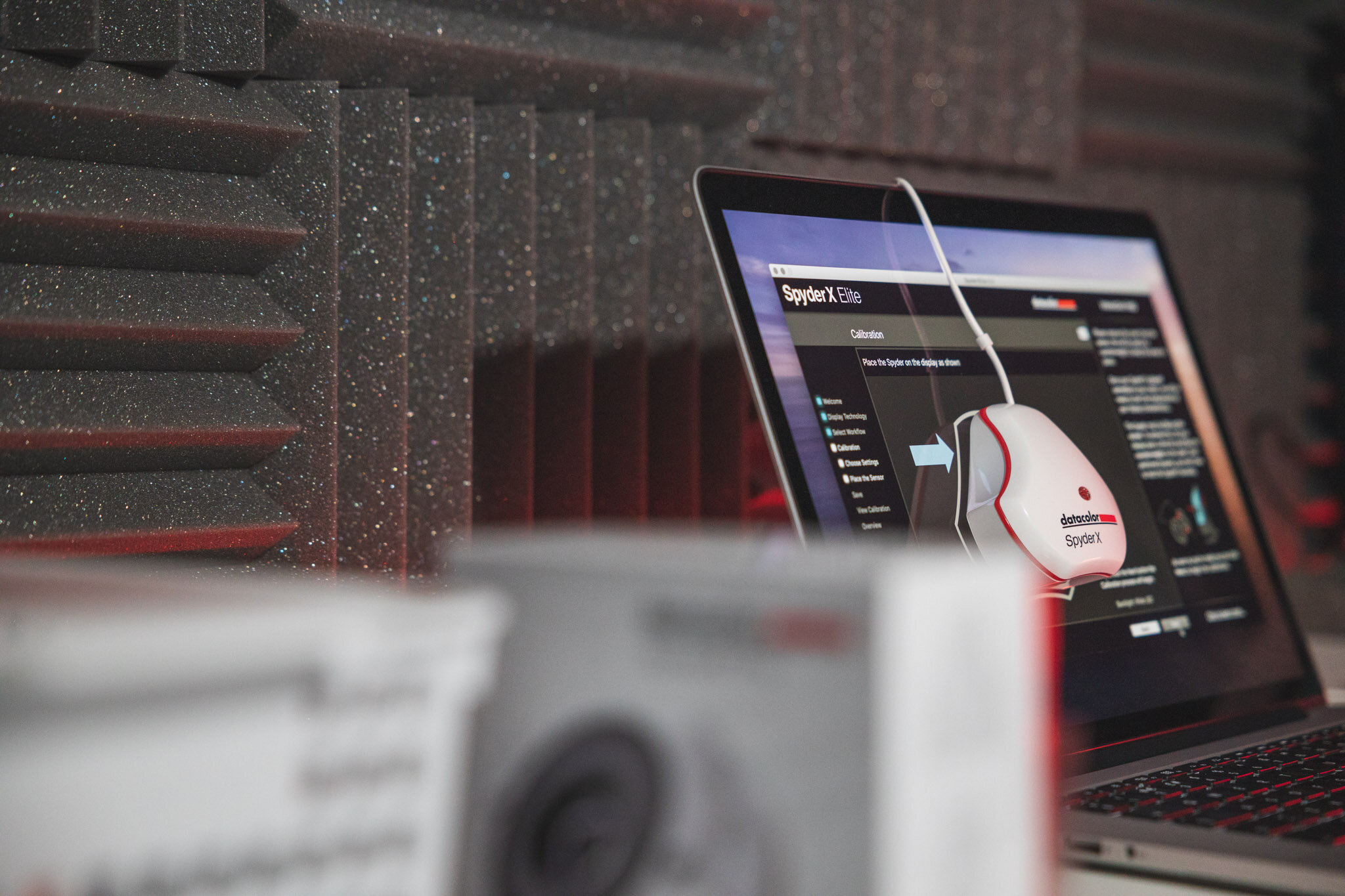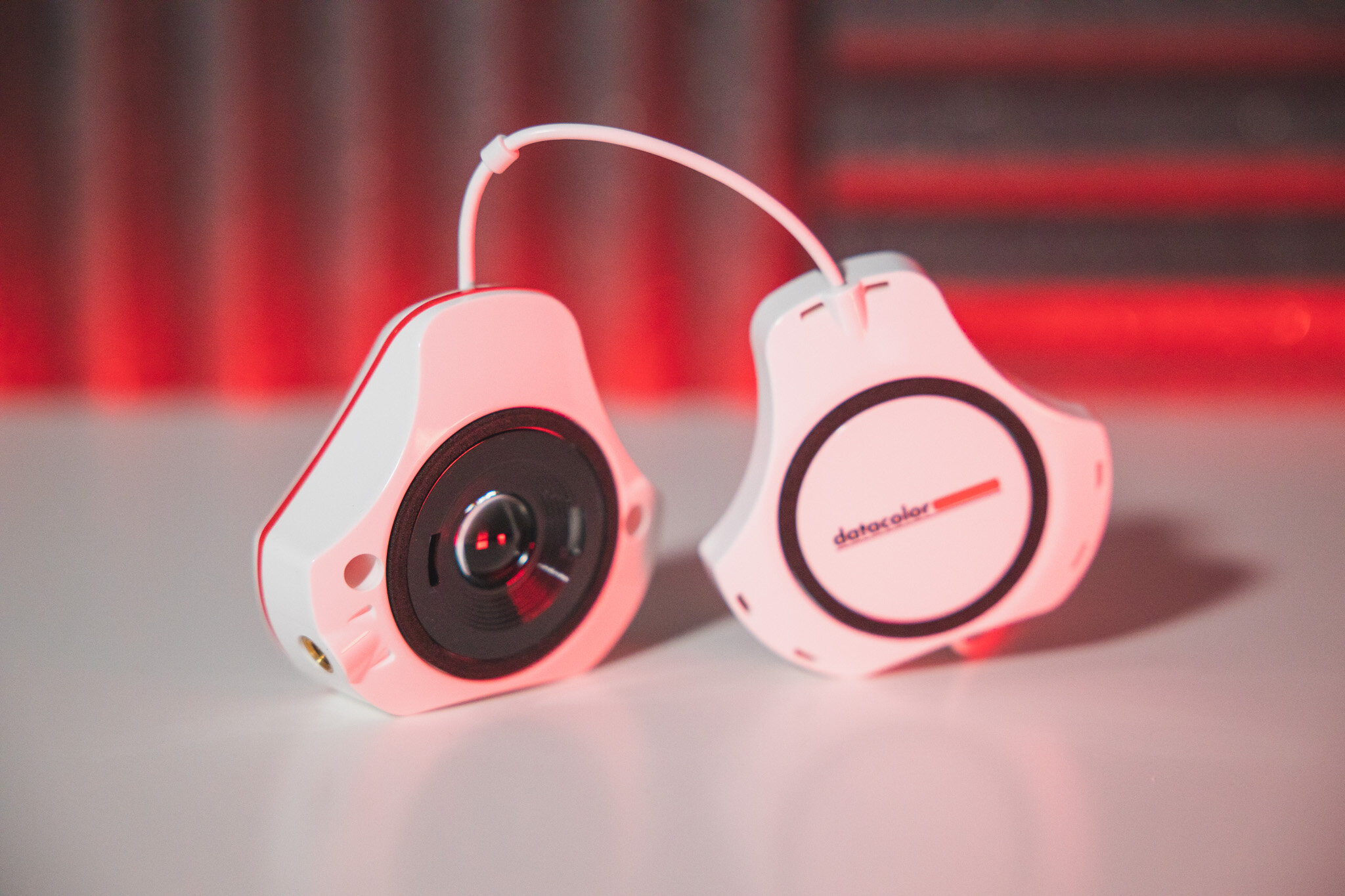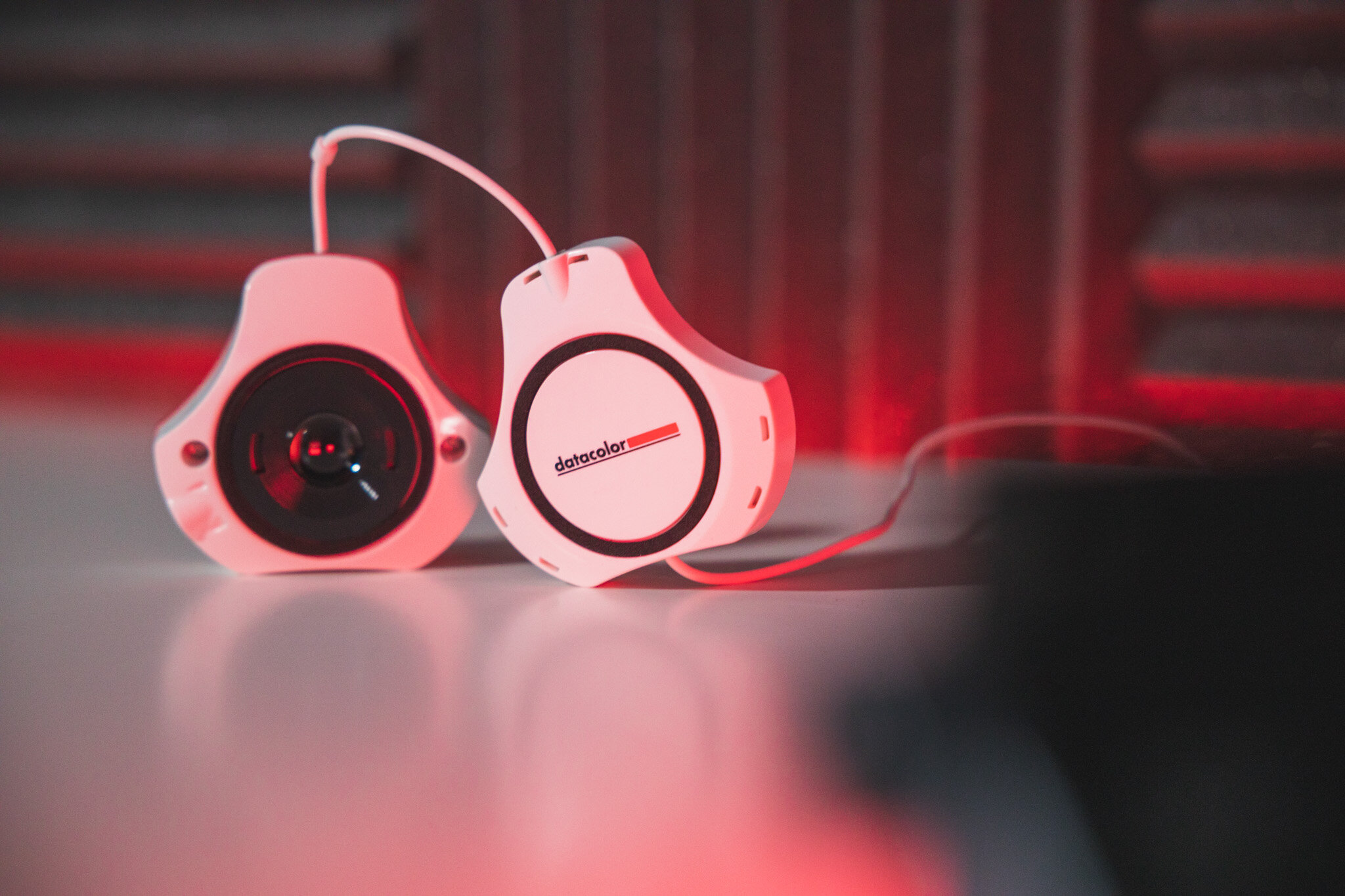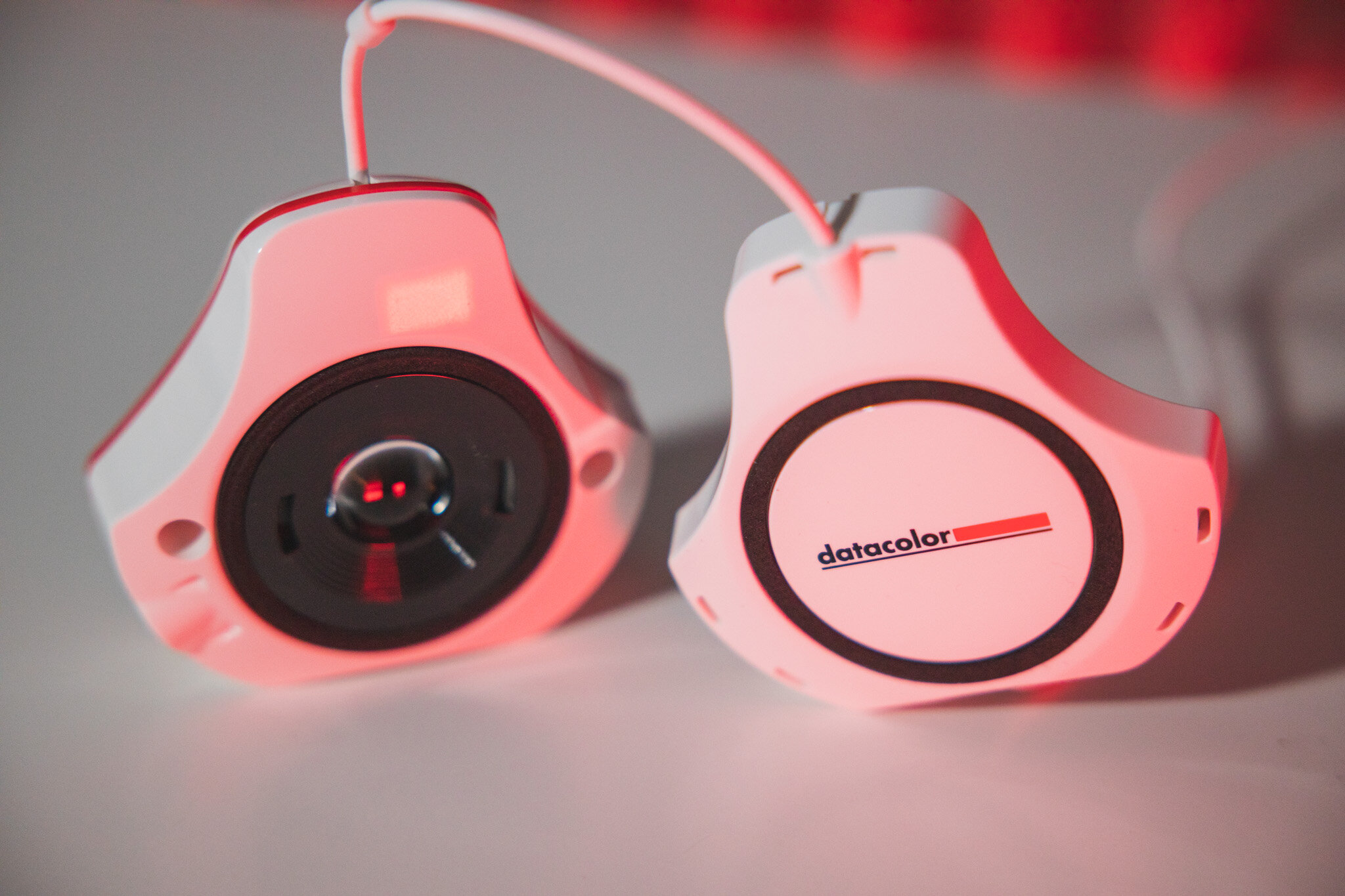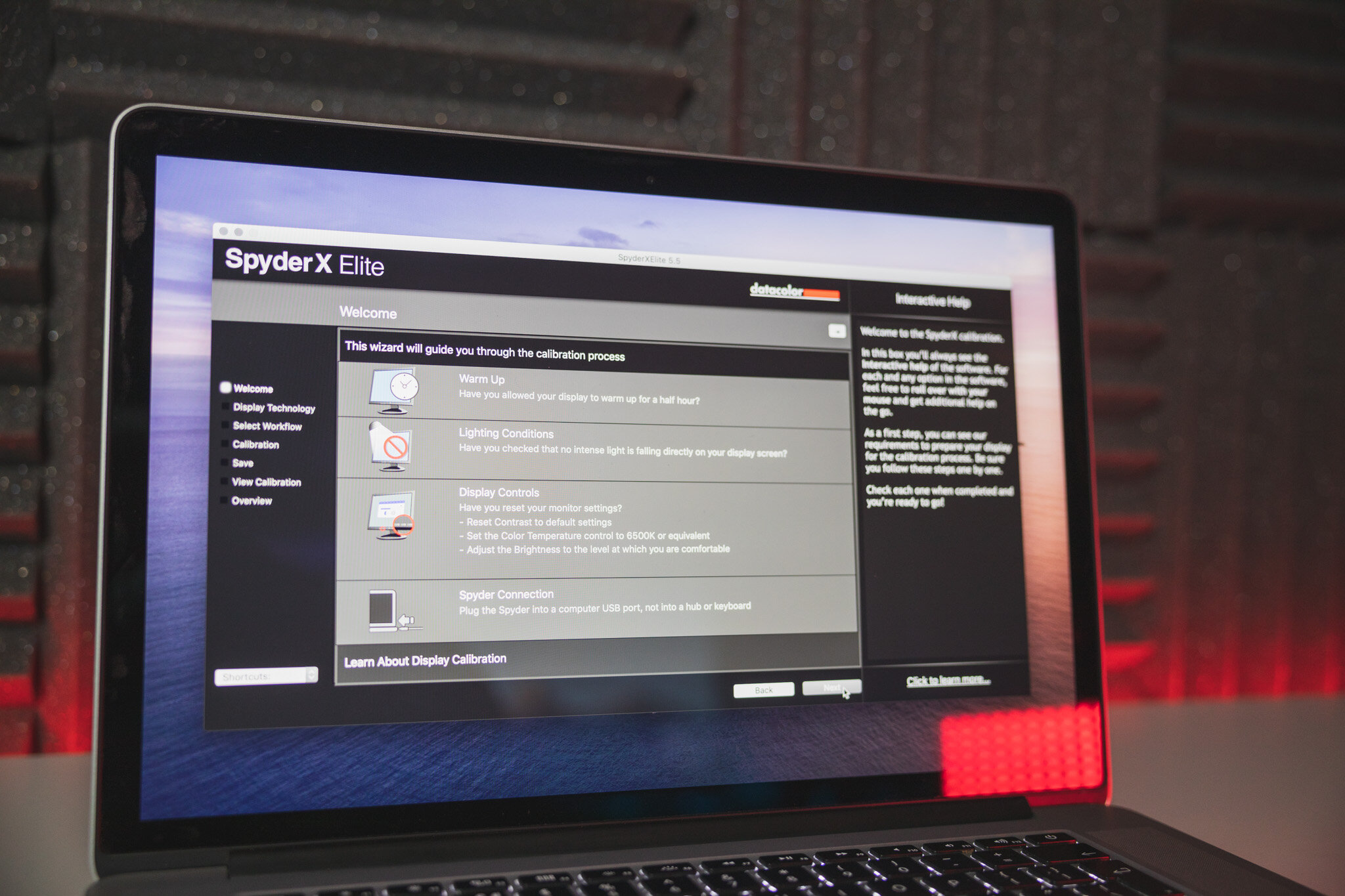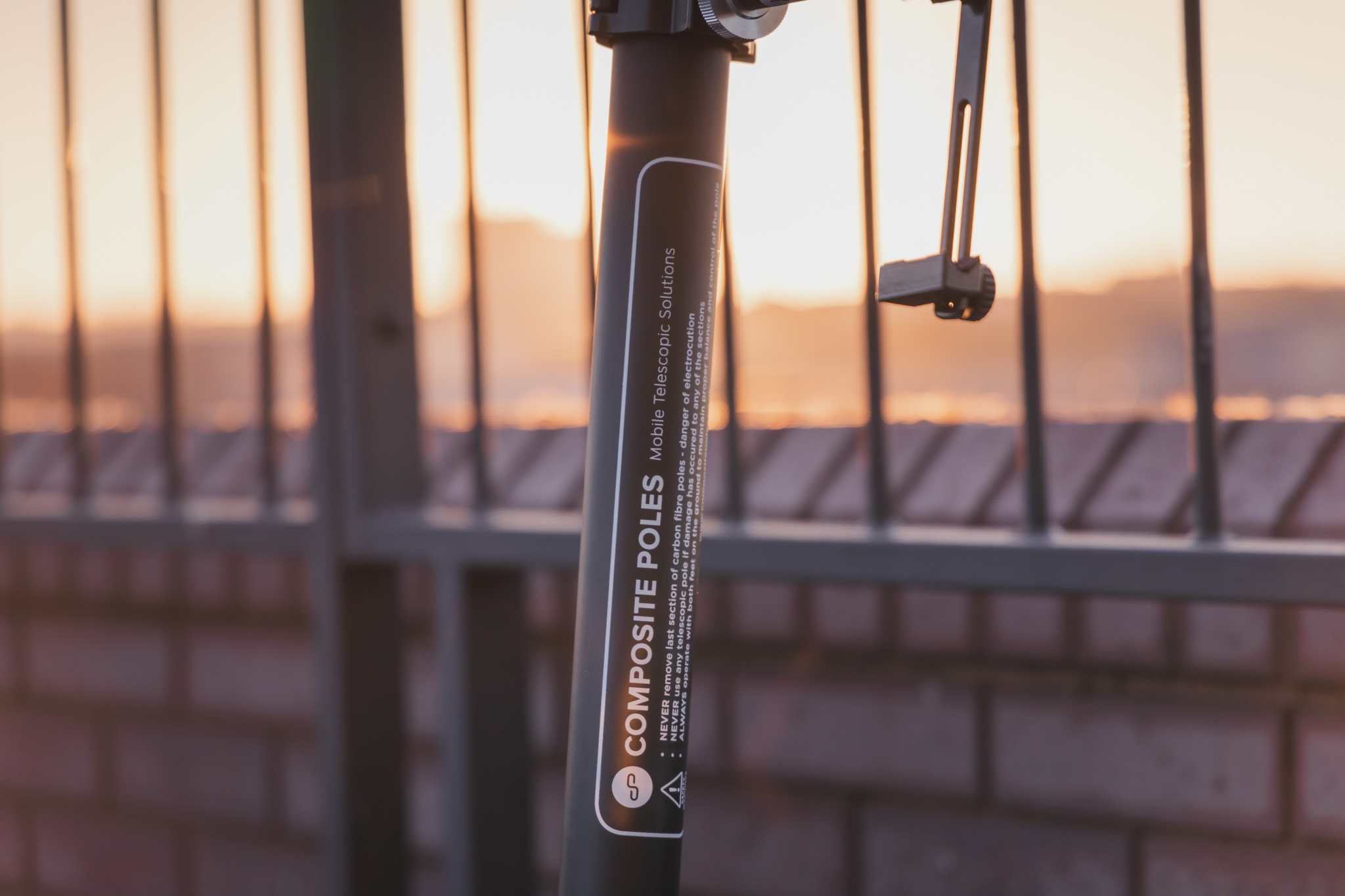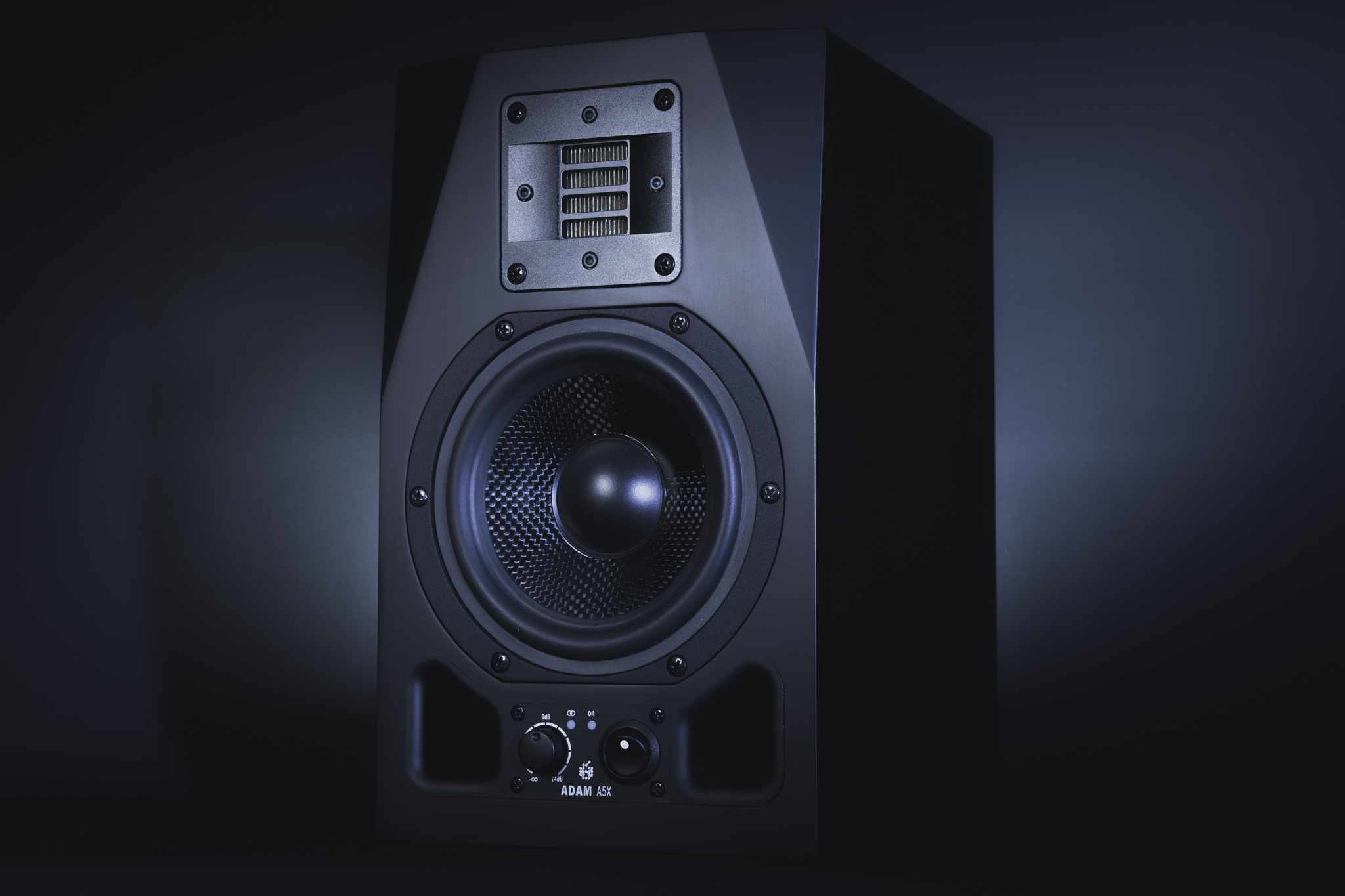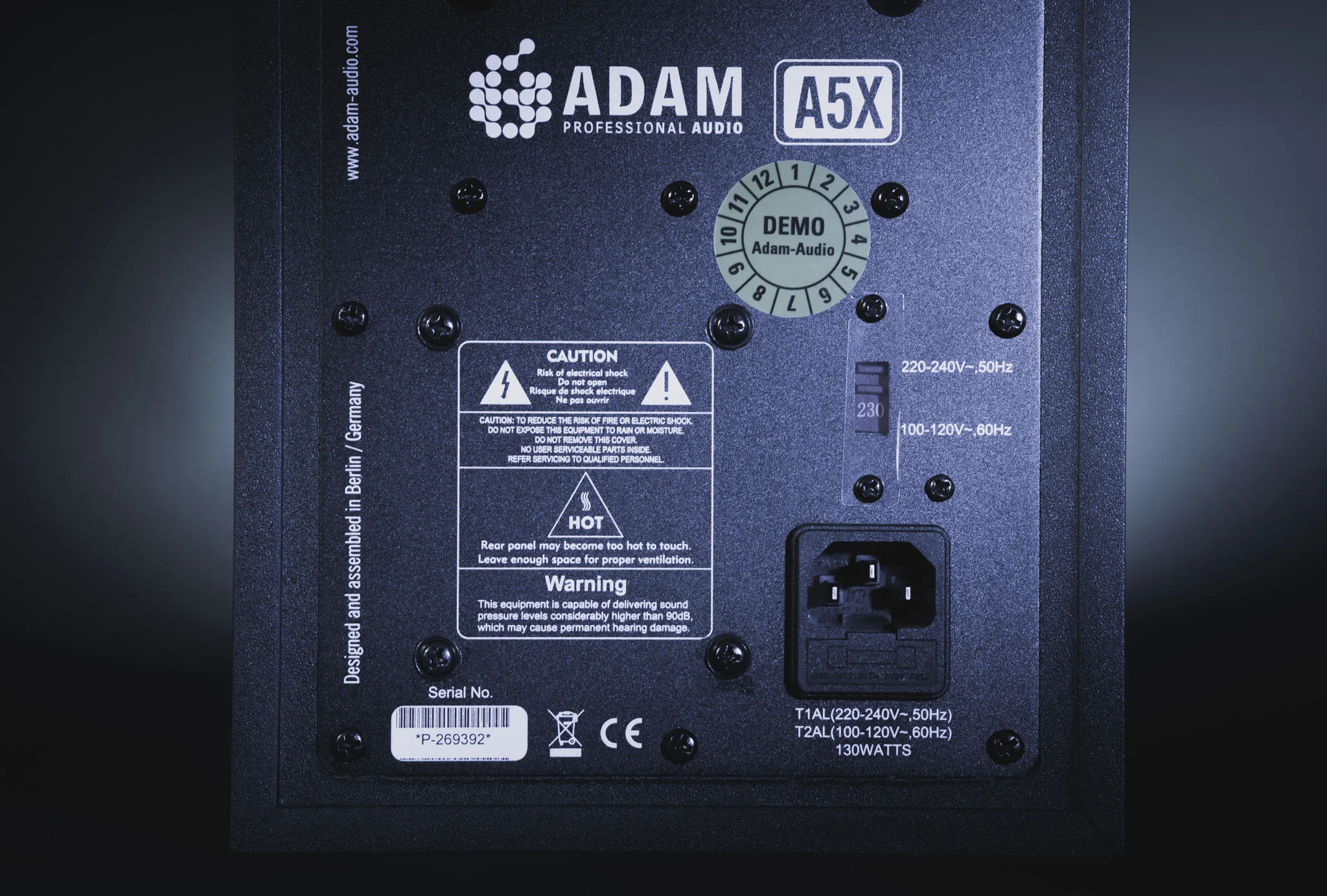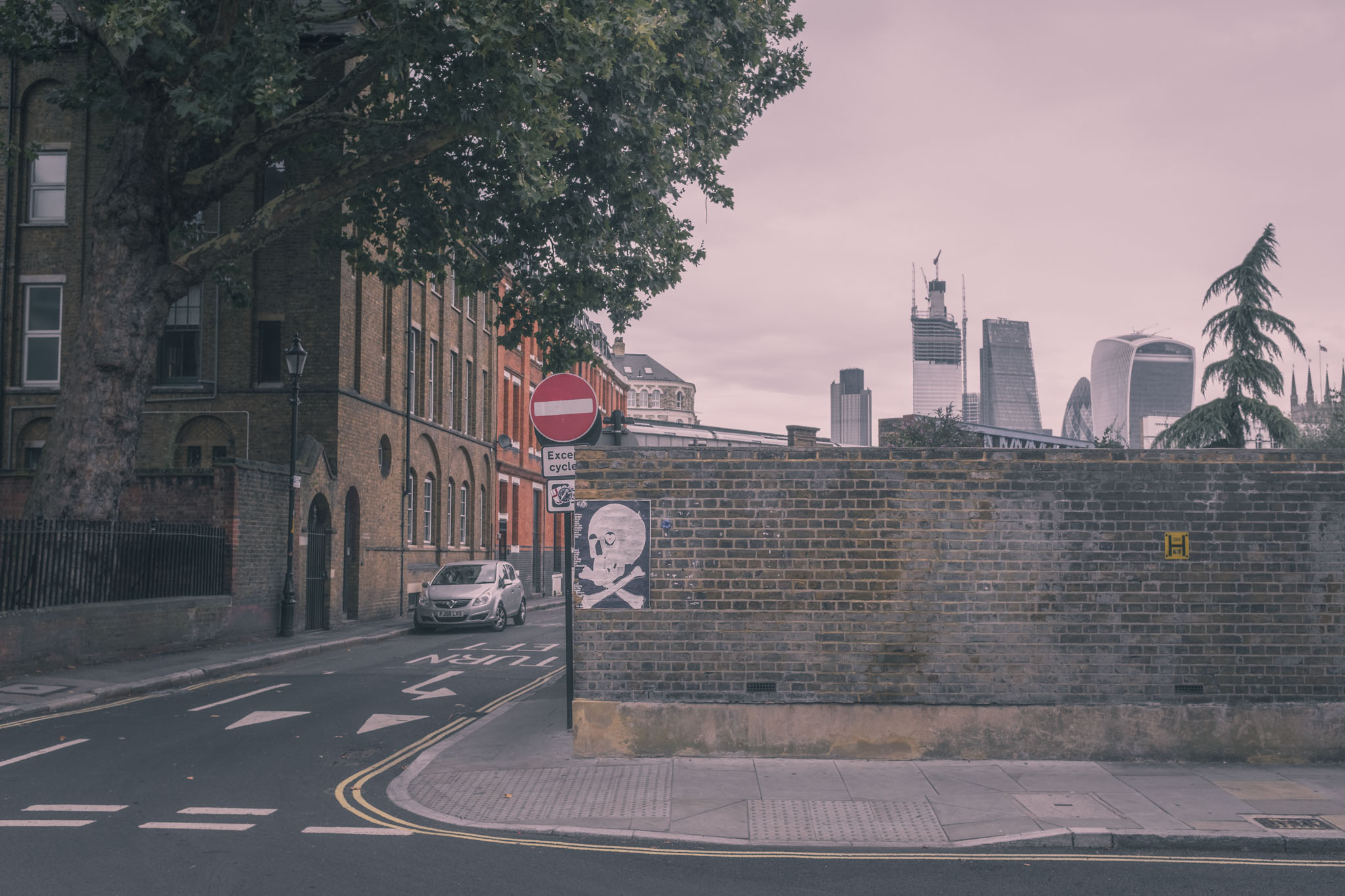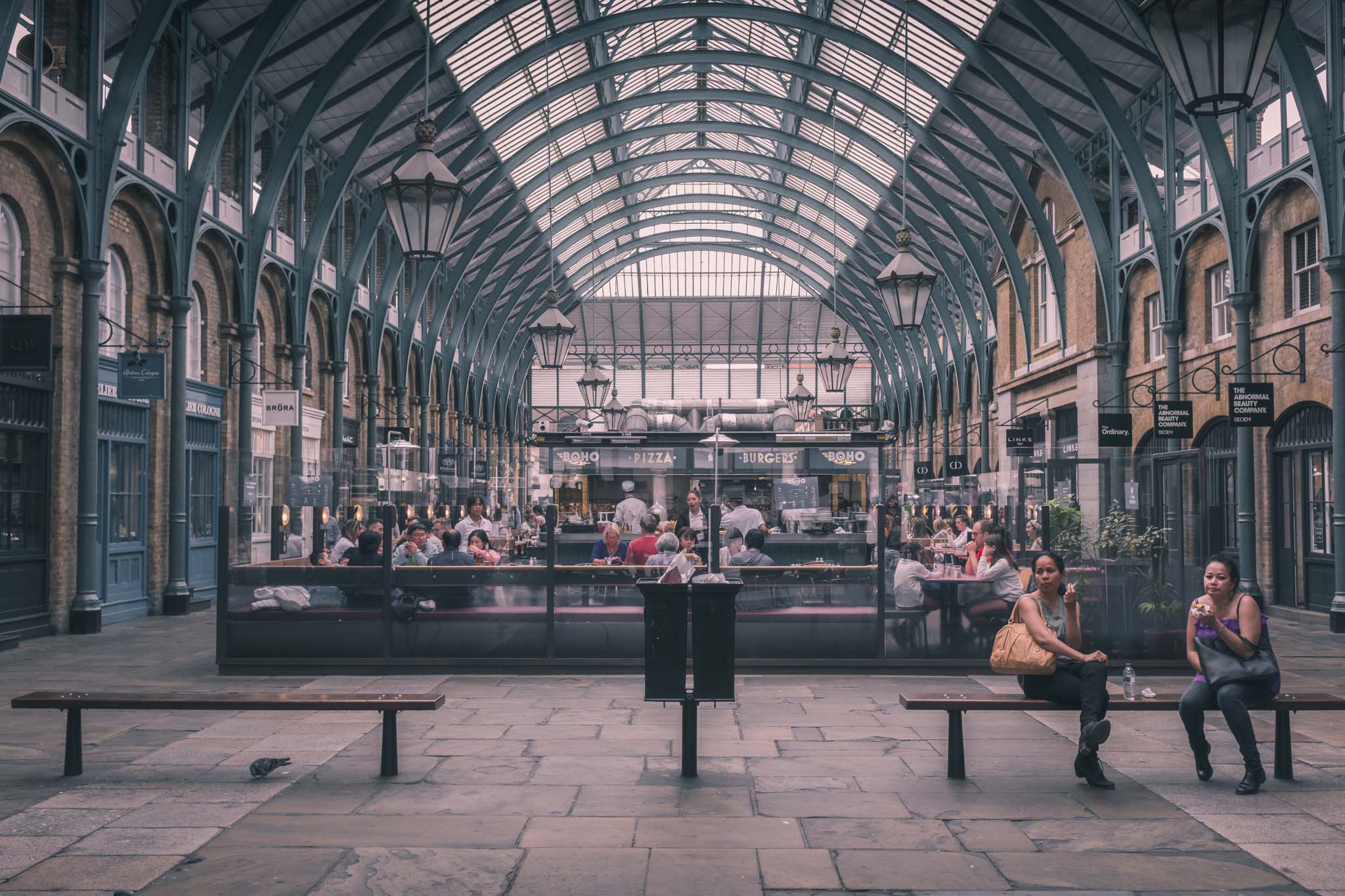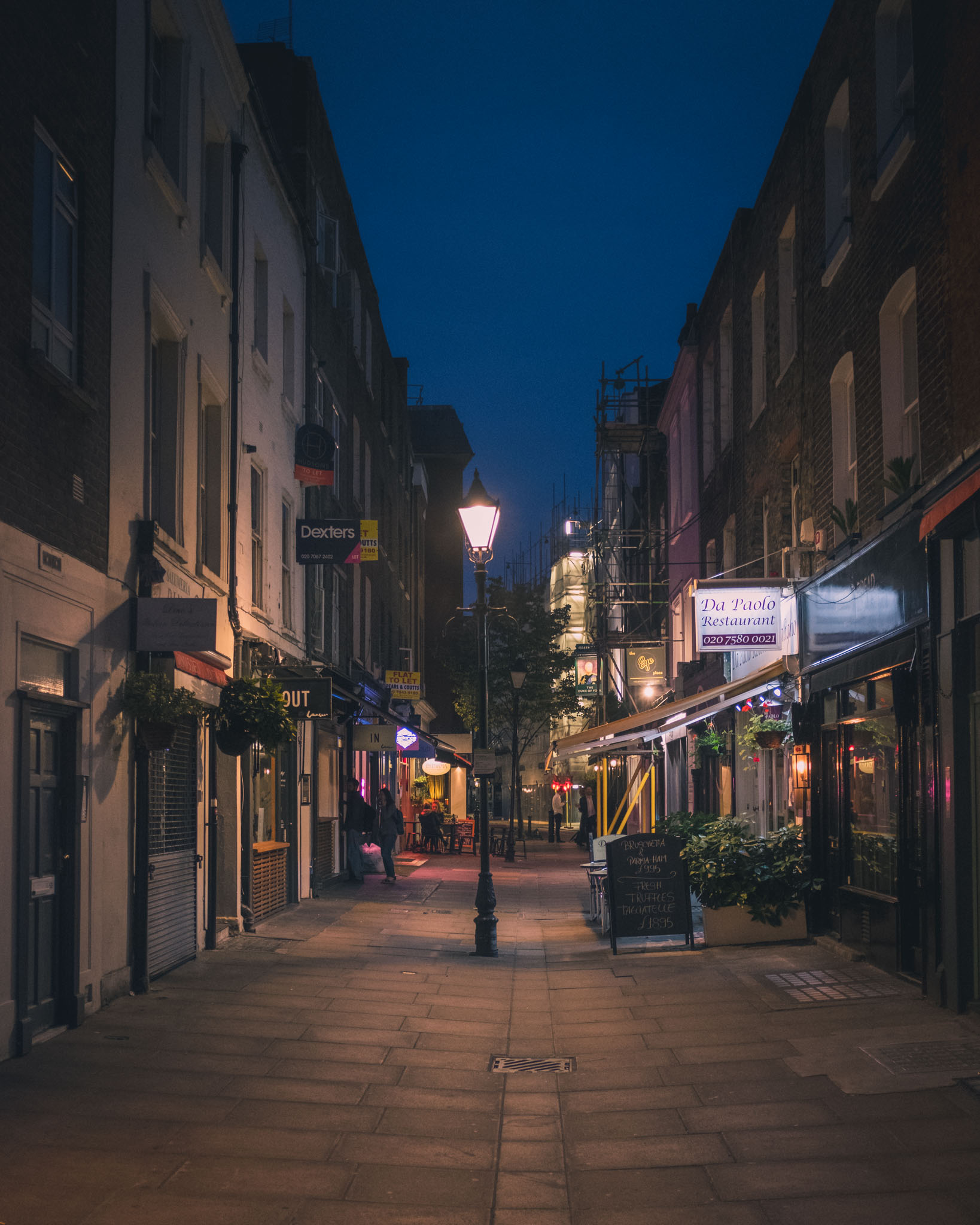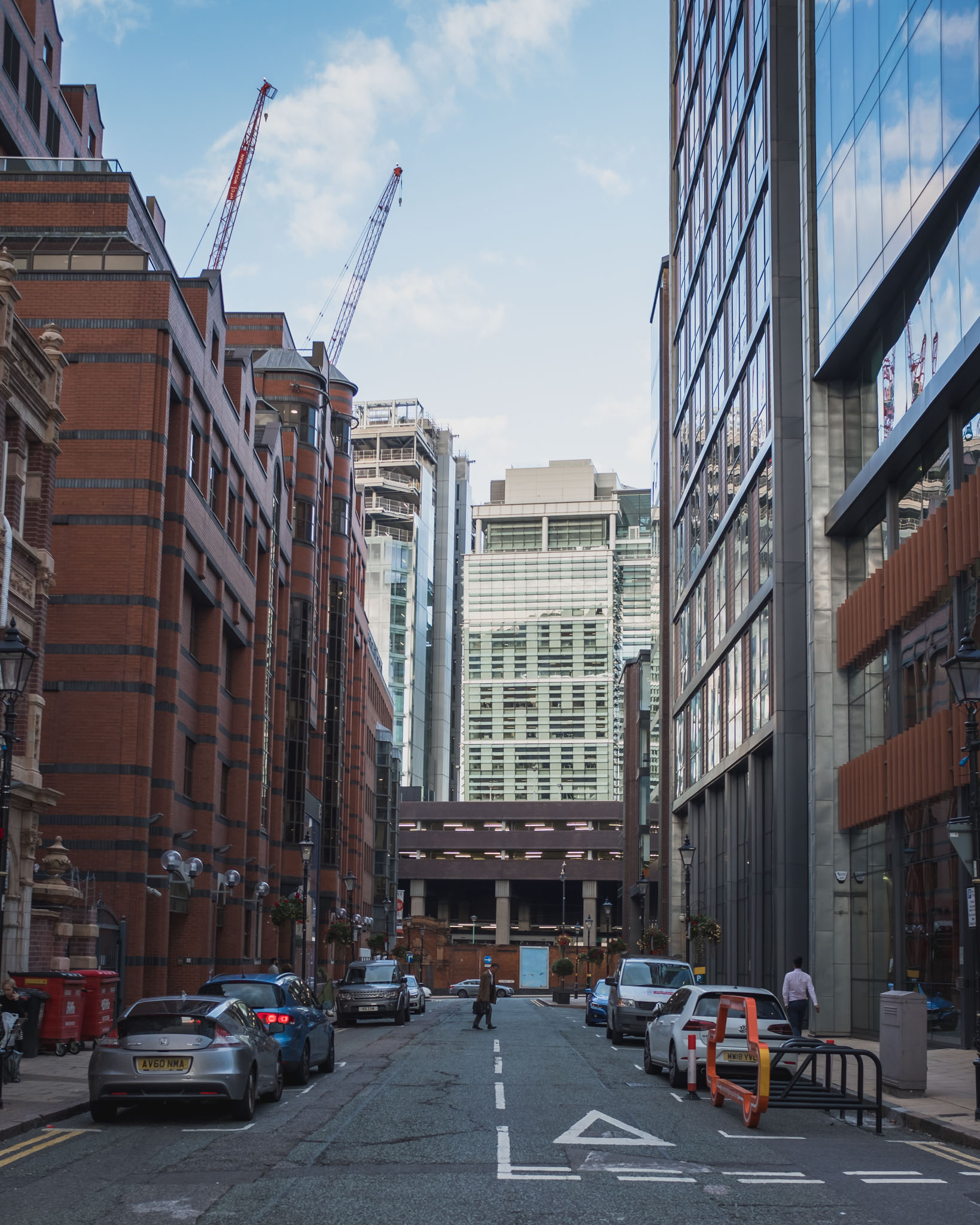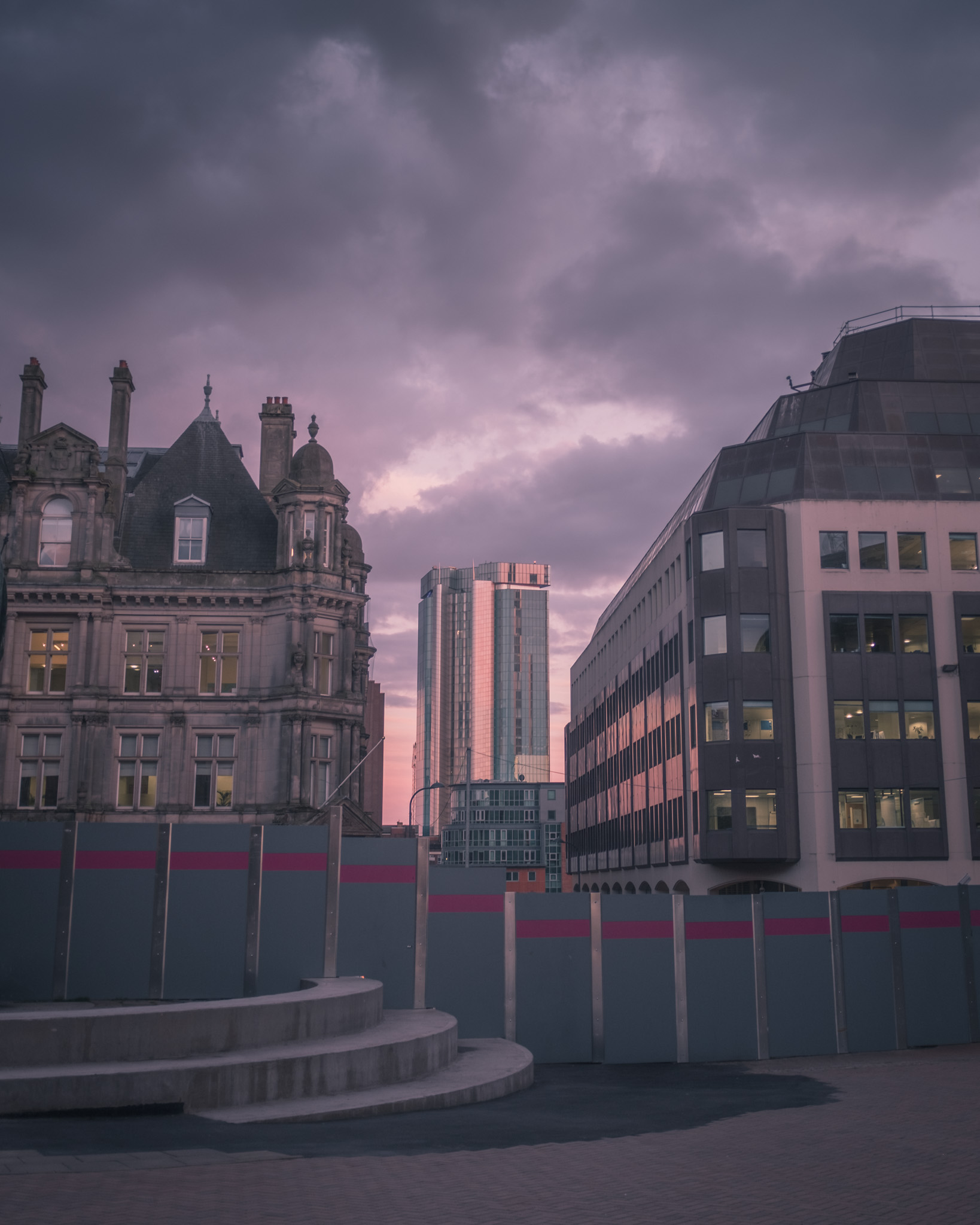VIDEO & REVIEW: DataColor Spyder X Elite - Monitor Calibrator
Buying a new Monitor Calibrator doesn’t have a particularly sexy ring to it - it’s probably not something that you are going to shout about all over social media. However, I honestly believe that it is one of the most important pieces of kit that a Photographer/Videographer can own.
Picture the scene, you’ve just landed your first gig with a huge international client, the shoot went well and you send the images off to their internal design house only to get laughed out of a job because the colours were ‘all over the place’! I know, I’ve been there and it’s not a place I want to go back to! Step in the ‘monitor calibrator’ - for the uninitiated, it is a device that reads varying hues, colours, tines etc. from your monitor and via the power of software, creates a new preset for your monitor that is absolutely spot on - no more laughy clients!
The Device
DataColor isn’t exactly new to this game, so you’d expect them to know how to build a decent device. I’m pleased to say, they certainly have! To anybody that has previously used a Spyder - the design will feel familiar. However, the beauty in the device lies in its speed, it is significantly faster than previous iterations which means there are now even fewer excuses for an uncalibrated monitor!
The unit is well made and feels like a quality product. I’m a fan of the white design with the red accent and as it is designed to sit by a monitor and take ambient light readings, it’s good that DataColor has taken their time with the design. The packaging is well made and the device comes with everything you need from a hardware point of view.
The Software
The hardware is only half the battle. DataColor’s software is really where the package comes into its own. I was using the ‘Elite’ version but having been a DataColor user for a number of years and I have always found their software to be intuitive and simple to follow - and there are no changes in that department!
The software is feature-packed and can cover everything from a basic calibration to a full, in-depth calibration, studio match for matching multiple monitors and can even calibrate other items such as projectors.
Using the software is so simple, I genuinely believe a child could do it. The software, even in ‘full’ calibration mode, has a simple walkthrough and regular prompts to explain what you need to do with both the software and the hardware. The on-screen prompts not only tell you when and where to place the calibrator - but it will also check you make and model of your monitor and to ask what controls you have over brightness and colour temperature.
Once you have followed the steps and the monitor has run its calibration process, you will be able to save a preset based on that current update. You will then be presented with a report based on the range of colour gamut the monitor has achieved - which is always useful. Finally, you get the option to see the difference the current calibration has made - which I personally find really useful.
The tip of the iceberg
To say that the Spyder X Elite can do more is an understatement! Depending on your needs, the options for calibration and the reporting that you receive at the end can go into way more detail. However, for the majority of us - the full calibration is simple yet deep enough to get great results.
The final verdict
The Spyder X Elite offers such a well-rounded set of calibration tools that there really is no excuse to have an un-calibrated monitor. It is not cheap at around £250 (prices will vary). However, I honestly think that if you are producing professional work for paying clients, it is essential that you are ensuring that you have highly accurate colours.
The improved speeds and ease of use make it a joy to use and calibrating your monitor is no longer an arduous task. Overall, I highly recommend the Spyder X Elite and believe it would make a great cornerstone of any amateur and professionals workflow.
Find out more at the DataColor website.
REVIEW: Skyreat ND/CPL Filters for DJI Osmo Pocket
The chances are, if you are reading a post like this, that you already know the importance of ND & CPL filters. However, if you’re still unsure, the common explanation of filters like this are ‘sunglasses for your camera’. Basically, they cut down the amount of light coming into your camera so that you can take more control over your settings. However, choosing the right filters can be a headache in itself, so hopefully, this review will take away some of that pain for you!
For a while now, I have been looking at filters for my DJI Osmo Pocket and I have been comparing many brands. However, Skyreat really appealed to me as they offer a great product and a fair price.The pack in particular that I decided on, covers all of the most common scenarios and as an added bonus, also contained the circular polarising filters (CPL) so it seemed like a no-brainer.
Starting with the ND filters, they come in ND4, ND8 and ND16, which should be great for all but the brightest of scenarios. The purpose of the ND filter in videography terms, is to cut down enough of the light coming into the camera so that you can match an appropriate shutter speed to your frame rate. The commonly used ‘180 degree rule’ means that if you have a frame rate of 25fps - your shutter speed should be 50, if you are shooting at 50fps, your shutter speed should be 100 - and so on.
As you will quickly ind, in particular when shooting at apertures such as f2 - like the Osmo Pocket, trying to bring that shutter speed down without and ND filter is almost impossible. However, the flexibility and range of these filters, has you covered. As an added bonus, they also come with the CPL equivalents, which allows you to cut glare from water and shiny surfaces and will make grass, trees, the sky all look more vibrant and add contrast in over-exposed scenarios. This is a huge bonus rather than having to go and buy a separate filter system.
Most important though, is the quality of the image when using filters such as these. I have not had any issues in this department and must add, that the build quality overall is excellent, in particular when considering the very reasonable price. I will be doing some demonstrations with the filters on my YouTube channel eventually, so you may wish to subscribe for more. Like I say though, the quality has been excellent and i have no complaints in that department.
The magnetic attachment is solid and Skyreat have thoughtfully provided a handy carry case and lens cloth, so you really have everything you need to take your pocket cinematography to the next level. Overall, it is a great kit to have and I highly recommend them.
if you wish to purchase a set, I have an affiliated link below which means I will recieve a tiny percentage of the sale price, but more importantly, it will not cost you anything additional!
Ricoh GRIII - First Impressions...
Before we kick things off, I will be doing a full video review of the GRIII on my YouTube Channel - so be sure to Subscribe… So, I have had my GRIII for 24 hours now and thought I would share my initial thoughts and a few sample images…
I have been a massive GR fan for years, nothing quite feels like a GR and it is close on the ‘perfect’ street photography camera. Having owned previous iterations, I couldn’t wait to get my hands on the latest version. The new model is a very similar size and shape to the previous model (minus the flash!) but also has a much improved 24mp sensor and a touch-screen, along with many other refreshed items.
Straight out of the box, the camera feels familiar, with the basic layout being much the same as its ancestors. The sleek design and desecrate branding, make it a perfectly pocketable weapon for those looking to keep a low-profile whilst shooting ‘street’. Whereas, I’m not much of a street shooter, I do appreciate the form factor and ease of use for shooting city scenes whilst not having to carry around a backpack etc.
The fixed 28mm (equivalent) lens goes against my usually (lazy!) style of shooting, which normally incorporates a short telephoto lens. It will certainly be a learning curve to get use to this focal length again but one thing is for sure, I’m going to need to take my ‘brave pills’ and get closer to the action. The autofocus feels snappy and from what I have seen so far, accurate. The other great thing about this camera is the start-up time, pretty much as soon as you hit the power button, you’re ready to shoot - essential for those capture action whilst out-and-about.
Looking at the images coming out of the new sensor, I’m impressed enough, considering how use to shooting full-frame I am. The only area where I am still on-the-fence is the low light performance. Noise starts to appear at around 3200 ISO and whereas 6400 ISO is perfectly usable, I think there is a clear grain structure there and although, due to my editing style, I actually quite like this - It will remain to be seen whether low light shooting becomes an issue. One thing is for sure, it hasn’t ‘wowed’ me straight away like the Fuji X100F did…
All-in-all, my first impressions are very good and I’m so happy to have a GR in my pocket again, it will be a fantastic everyday carry. I will make a full review over the next few weeks to give more in-depth feedback.
Sample images - Edited, the full review will include a RAW image comparison.
Broge Poles - How to get a Drone style shot without the Drone
As a photographer, I am always looking for ways of creating images that are truly unique. One way of doing so is shooting from an angle that nobody else can access. The most common way of doing this, is to use a Drone. However, Drone use is not only prohibited in certain areas, they can be quite costly and difficult to use. Now though, it looks like there might be a safe, affordable and easy solution. I tested out one of Broge’s composite poles, to see how it stacked up.
Aerial Photography - the hidden problem
Aerial Photography is not a new thing. However, consumer Drones have opened up the market to anyone and everyone. I myself am a Drone user and I am regularly impressed by the quality of content produced by other Drone users. However, I also see many who fail to abide by the ‘Drone Code’ a series of rules set out by the Civil Aviation Authority to encourage safe Drone usage. One of the main issues being the use of Drones in built-up areas.
As a Drone user, I have also been tempted by the desire to use a Drone to get truly unique vantage points over some of the city’s best buildings. However, the potential risks (not only the potential fines) are a moral deterrent. I certainly see how easy it would be for a ‘run away’ drone to potentially cause a huge accident, in particular if it was to strike a vehicle on one of the city’s main roads.
A different view point
However, there is a much simpler alternative to getting a special view that not many others will have seen. Step in, Borge. When I found out about the composite poles, I was very keen to see whether they would honestly give a much different perspective. Without doubt, they would not be able to reach the hundreds of feet that a drone can, but could they be used to create striking images? I quickly found the answer…
From the moment I placed my Sony RX100V on the easy-to-use ball head and started to elevate the poles, I could see a whole new perspective open up. As I was shooting at a fairly wide field of view, around 24mm - the moment the camera got above two or three meters, completely new possibilities started opening up! The fact that the pole I was using could be escalated to 8 meters, I knew that this was going to be an interesting piece of kit!
Build Quality and Ease of Use…
Straight out of the box, I knew it was a quality piece of kit. The pole itself came in a very nice carry case, making the pole and attachments easy to transport. The pole is made from high-quality Carbon Fibre and comes in telescopic section. Each section has a clamping ring that is loosened as you raise each section and then tightened to secure it. Having been a tripod user for many years, I appreciated how robust the clamps were and the fact that they felt secure when the pole was at maximum height.
I was using a ball head to set the camera to a portrait perspective, as most of the shots that I post are set to portrait for better social media use. I was also using a Universal Phone Mount Clamp Kit to secure my iPhone. As I don’t have 8 meter arms, I was using my phone through the Wifi app so that I could control it whilst it was at the top of the pole and it all worked a treat. The phone holder was easy to adjust so that I could easily use the phone whilst holding the pole. However, the pole also had a Foot Plate at the base so it added an extra element of security.
The pole was simple to erect and even easier to take down and at no point did I feel that the camera was in danger of falling off. The only thing that I would recommend, it being mindful of strong winds and using anywhere near power lines etc. - but I really hope that is self-explanatory! Overall, both the build quality and ease of use were very impressive.
Final Thoughts - Does it Stack Up?
I was skeptical at first as I did not see how an 8 meter pole could compare to something that can actually ‘fly’. However, I have been very impressed by the results and my images have certainly gone down well on social media. I think the fact that it takes away all of the risks and dangers associated with Drone use, it makes this one a no-brainer.
In addition to this, I could also see how many alternative uses it could have outside of photography - such as for use in inspecting roofs, guttering etc. It also opens up other possibilities in terms of shooting over crowds, where access may be an issue or even elevate angles inside properties - something that Drones could not do. Overall, this is an excellent piece of kit and something I can see being very useful in a whole host of situations.
For more information and to purchase, visit: Broge Website
REVIEW: Adam Audio A5X Studio Monitors
I’m a big believer in quality products, you really do get what you pay for. I use this ethos when buying equipment and when sound quality of videos is crucial, having good studio monitors for checking sound is critical. That and the fact that there is always music playing in my office so only the best will do! Will the Adam Audio A5X’s cut it? Read on…
Specifications
The A5X’s are a nearfield studio monitor that have proven to be popular with music professionals. The key specs are:
Adam Audio’s ‘X-ART’ Tweeter
5.5“ Woofer (Carbon/Rohacell/Glass Fiber)
Amp. Power RMS / Music: 100 W / 150 W
Frequency Response: 50 Hz - 50 kHz
Max. SPL per pair at 1 m: ≥110 dB
Stereolink
Build Quality
Easily one of the most impressive things about the monitors (and certainly the first thing you will notice straight out of the box) is the quality of the build. The wooden cabinets are predictably weighty but all of the fittings (the tweeter mount, cone, inputs on the rear) all feel rigid, well built and properly manufactured. There are clearly no shortcuts here and being hand-built in Germany, you wouldn’t expect anything less.
However, equally as impressive is the functionality. Well thought out design is very apparent, such as the on'/off switch and bass tunnels actually being on the front of the monitors, not only making them easy to use but optimising the sound in smaller rooms, which is predictably, where monitors like this will be used. Overall, they feel like a very high quality product and there are no disappointments in this department.
Sound Quality
So this is the biggie, does the sound quality live up to the circa £600 price tag? Well, in short, yes, and then some. From the moment that I plugged these into the DAC and ran the first track through them, I have been incredibly impressed. I have even had to get a second opinion from friends who ‘know their stuff’, just to make sure I wasn’t being too over the top!
So what sets them apart? The first thing that strikes you is the clarity that the X-Art tweeter adds, but more of that later. The bass is equally sharp, with no muddy tones and the ‘room’ micro controls on the rear, really help you fine tune the monitors to suit your space. All though they have a fairly narrow dispersion, it will be worth considering placement of the monitors but rest assured, when you find the sweet spot you’ll know. The first few tracks that I listened had me twisting my head around in circles as I was picking up instruments left, right and centre - they really do provide a fantastic sound image.
I almost think that they are a bit of ‘overkill’ for anyone who is not producing music on a regular basis (me included!) but they are incredibly accurate and a joy to listen to with no audio-fatigue experienced whilst using them. They carry plenty of bass (though an additional sub-woofer is available) but unless you live in a detached house in the middle of nowhere (or own a recording studio!) I don’t think you’ll require any additional low. Additionally, at 150 watts, you won’t have to push them hard before you have some very upset neighbours, should that be something you’re interested in!
The Star of the Show…
A special word has to be said about the X-Art tweeter. It is a Ribbon Tweeter, something that I had not (knowingly) experienced before and it completely blew me away. To be honest, explaining how it works would take me way out of my comfort area as I’m not a studio technician, but if you fancy learning more about the technicality of it, you can read up HERE
The only thing that I would say is that it really needs to be experienced to appreciate the differences it makes. Having previously used the M-Audio BX5 D3’s - I would struggle to go back to them, having heard the quality and performance of the A5X’s. The performance of the mids & highs really does lift these monitors above the competition.
Conclusion
These are the best studio monitors that I have used by some distance. Stepping up from the M-Audio’s, there really is no comparison. The sound is so much clearer and crisper and you can really feel the difference that the X-Art tweeter makes. I would say that only studio professionals would need (or even be able to differentiate between) anything more expensive than these monitors. I certainly feel that you would be getting into the realms of diminishing returns with more costly monitors.
Should you purchase these monitors? That really is your choice but if they fit your budget, they should be very seriously considered. I would be amazed if you didn’t think they were anything other than a bargain considering the quality of the sound.
For more information, visit Adam Audio
VIDEO - Canon EOS-R Preview
So I have took the plunge and gone and bought myself a new camera! More specifically, the much anticipated Canon EOS-R - A new full frame mirrorless option from the camera giant. Where as I have only had it for a couple of days, I thought I would share my initial thoughts on the handling and the feel of the camera with a full review to follow shortly, so don’t forget to subscribe to my YouTube channel!
REVIEW: Loupedeck+
Loupedeck have certainly made a splash in the photography market over the past couple of years. Ever since the launch of their inaugural product, many photographers have adopted the Loupedeck into their workflow. There really is something about being able to twiddle a knob that is far more satisfying (stop laughing!) than dragging a mouse around. I too, was an adopter of the Loupedeck way of life so when I heard that they had launched their updated model, the Loupedeck+ - I couldn’t wait to get my hands on it and have a twiddle!
The Loupedeck, for those that are not aware, is a physical controller for Lightroom, with pre-determined controls for everything from Exposure to individual hue & saturation dials. The benefit of this is that it speeds up your workflow as you are not scratching around with a mouse, trying to make minute adjustments and constantly having to go backwards and forwards, trying to find the perfect spot. The physical controls are responsive and accurate and once accustomed, you’ll wonder how you ever used a mouse in the first place. Still not convinced? Keep an eye-out for a video to follow which will show you in more detail.
First Impressions…
Straight out of the box, the plus feels like a premium product. It comes extremely well packaged and is presented beautifully in the all black packaging. The controller itself is plastic, which comes as a little bit of a surprise consider the price point. However, this actually makes sense, in particular if you are going to travel with the controller as it keeps the weight down. That being said, the plastic is clearly good quality and it has enough weight to it that it doesn’t feel flimsy. The dials also feel good quality with a rubberised touch and a distinct ‘click’ when rotated, to help with the ‘feel’ when in use. However, I would have liked a touch more resistance to them as they are quite easy to rotate and I would have liked a little more feedback - I’m sure this is just personal preference.
The controls are all laid out in a very logical fashion with the priority dials such as Exposure, Contrast and Clarity all being fairly central (which will suit both right and left-handed users) and the tonal controls and temperature controls more to the right. The function keys, such as undo/redo and shift & control etc. are all to the left of the controller, which again makes pretty good sense as they are used slightly less frequently. Finally, there is a good array of customisable buttons, but more of that later. Setting up the controller for first usage is also pretty simple. However, it does require downloading the appropriate software for your platform but once installed, it communicates with Lightroom pretty well and I certainly didn’t have any issues getting started.
In use…
As with it predecessor, the Plus certainly adds the element of speed to your editing. However, it does take a little bit of time to get use to. Very much like learning to type, it takes a while to understand where every dial and button is. When you get it (and it really doesn’t take long to get) it’s a dream, it just becomes second nature. There is certainly a benefit to having something tactile, that you can control your fine adjustments with. However, I did repeatedly keep finding myself having to have a quick glance down, to check that I was ‘twiddling’ the right knob.
One of the main upgrades is the potential for the Plus to be used with more than just Lightroom. It is now compatible with Skylum (formally Macphun) and Aurora HDR. This certainly adds value to the device and is great for those looking to get even more creative with their editing. However, it doesn’t stop there, it is also now compatible with Adobe’s Premier Pro video editing software. Though I have not tried this yet it is certainly appealing to people like myself, that produce photography and video - the idea of having one, tactile editing interface is very appealing.
The improvements continue with additional customisable keys and a ‘custom mode’ which allows you to take full control of all keys and dials. This really opens up the possibilities with the device. The keys are also now mechanical which give improved responsiveness so you always feel in control. In addition to the physical improvements, the configuration software has also had a spruce up and worked flawlessly whilst setting up.
Final thoughts…
I have always been a fan of the Loupedeck. I love having something tactile that I can use to edit and feel it gives you a lot of extra control over your editing. I am pleased to see some improvements but also would like to have seen a few further additions - notably Bluetooth. However, having used the Plus for a few weeks, I can’t really see how I would go back to the ‘traditional’ style of editing. There is simply something so satisfying about taking manual control over your editing to really nail your edits.
I look forward to seeing how the Loupedeck evolves over the coming years and guess that there may be software updates during that time, opening the Loupedeck+ up to even more versatile uses. Check out the trailer below.
REVIEW: Fujifilm X100F
For a while now, I've been searching for the perfect camera for my style of shooting. I love my Canon 5D Mkiii, it's an absolute workhorse! I know it inside & out, but it's not exactly discreet. At the other end of the scale, I have a Sony RX100V, which is a fantastically versatile camera and excellent for video, but the ergonomics, awkward menu and painfully slow boot up speed make it difficult for street use. If only there was a camera somewhere in the middle, a 'do it all' kind of thing, well we may be looking at the solution!...
All show and no 'go'?...
The first that strikes you with this camera is the looks, it's a thing of beauty. I love Rangefinder style cameras and all of those external dials just add to the vintage feel. The X100F comes in black or silver (I plumped for the stealthy looking black). Picking the camera up, it feels light (469g), but solid enough that it feels like it would take a (minor) fall. The next big tick in the box is the ergonomics, the grip is perfectly formed and the dials and buttons are laid out in a pretty decent fashion, but more of that later. Finally, the physical size. Now I was a little surprised by this as I thought the form would be a little smaller, but it's actually a really good size and if you have larger hands (like me) it doesn't feel like a toy, far from it. On the flip-side, I think calling it pocketable may depend on the size of your pockets! Having carried a Ricoh GR for years, I was use to something that I could slip in a jean pocket. Whereas the X100F comfortable fits in a coat pocket/side bag, if you carry it in you jeans, expect to be asked 'is that an X100F in your pocket or are you just pleased to see me?'!
Although it's superficially pleasant, it's what's inside that counts and the X100F certainly doesn't let you down in that department. It boasts a 24.3mp, APS-C size X-Trans sensor. It has a fixed 23mm (35mm equivalent) f2 lens with a digital ND filter. The camera records 1080p video with frame rates from 24-60. The X100F also features a beautiful 2.3m dot hybrid LCD viewfinder with focus peaking. On the rear, you'll find a 3 inch LCD display, though the screen does not articulate. The camera also features a built-in flash, SD/SDHC/SDHX card slot, built in Wifi and USB 2.0 connectivity. On a final note, despite being fixed lens, the body is not weather-sealed. As you can tell from the specs, good things really do come in little packages.
Handling & Build Quality...
Right from the outset, I was in love with this camera. It felt natural in the hand and even though it seems a little strange to say it, it feels like a camera should. It's like you instantly know where all the dials and settings are, well almost all. There are a few minor grumbles, like the ISO selection being built into the same dial as the shutter speed, not sure why? One problem that did rear it's ugly head, which was knocking the dials whilst in my pocket. I know, I know, this is 'user' error and I could quite easily have put the camera in a case, but part of the beauty of this camera is the ultrafast start up speed, which is a god-send for street photography. However, way too many times I found myself staring at a dull or over exposed scene, only to find that I's knocked the exposure compensation in my pocket, by which time, the shot had passed. This is only a minor grumble and completely my fault, but one to bear in mind.
“I really didn’t want to leave the house without it, even popping to the local shop became a long drawn out adventure, just so I could take my new companion out on an exploration.”
Nonetheless, this is a beautiful camera to hold and use. Furthermore, the build quality feels, well, quality. The dials have a good firm 'click' to them, the body feels sturdy and and even though Fuji have clearly taken the time to consider the 'looks' of the camera, there is nothing there that isn't practical and tactile, it is quite an achievement. That lightweight and tactile feel made the camera a joy to use and meant that I really didn't want to leave the house without it, even popping to the local shop became a long drawn out adventure, just so I could take my new companion out on an exploration. One of the real joys of this camera though was the autofocus, the Intelligent Hybrid AF was incredibly responsive. I have always been pleased with the AF of my little Sony, but the X100F is certainly not a slouch and was ideal for capturing those split second moments in the street, it was a joy to use.
Image Quality...
There is no point beating around the bush, this camera creates beautiful images. Having grown use to my (now ageing) 5D Mkiii, using this camera showed me that the smaller, APS-C sensors (and in particular, the X-Trans 3 colour filter) did a fantastic job, rendering scenes in fantastic detail with colour science on a par with Canon's legendary colour wizardry. The sensor seemed to perform fantastically, even at low light and handled blacks wonderfully. Highlights, to me at least, seemed a little more of a challenge but that was only when I really pushed it. If you get a decent exposure, you're fine. My style of shooting (very 'run & gun') meant that I was constantly pushing & pulling the files, either under or over-exposing, sometimes intentionally and occasionally, accidental. However, I was surprised at how manageable the RAW files were, they seemed to have plenty of dynamic range and retained great sharpness throughout, thanks to that coupling of quality lens & sensor.
I will be the first to admit, my style of editing isn't to everyone's taste and the images that you will see below, may look faded and soft at times, this is my 'style'. However, the X100F is a very capable camera and can certainly delivered sharp and vibrant images. Although the lens may not be ideal for sports photography, the 8fps burst mode certainly came in useful for street photography. The f2 aperture made shooting in dimly lit situations a breeze and rarely did I find an image with any noticeable noise issues, which was a surprise coming from the full-frame 5D to see how well the smaller sensor handle lower light.
As good as it's predecessors?...
The X100F certainly builds on the success of the X100 'S' & 'T' - the differences are somewhat more practical improvements rather than revolutionary. Fuji have bumped up the pixel count from it's older siblings but the look and the feel of the camera are practically the same. This is certainly, in some respects, an 'if it's not broken, don't fix it' situation. Things like Facial Recognition, the speed of the AF etc. really set the X100F apart from the older iterations. This camera is a great option if it's your first delve into the Fuji line-up, but for those needing the added versatility of interchangeable lenses, knowing there are other options such as the X-Pro 2 and the XT-3 - Fuji have you covered. For me though, the X100F is very much a 'do it all' camera and if you can live with the fixed focal length, you're onto a winner.
One thing that Fuji does really well, is it's 'film stock' emulations, which the X100F continues to build on and deploy in great fashion. These are basically in-camera presets that emulate some of Fuji's historic range of film types. They work in a great way, though the output is Jpeg (obviously) and for the hobbiest, it's an easy way to 'see' what kind of looks you can achieve. I did not fully explore this as I was shooting RAW and have my own editing techniques, but it's nice to see Fuji continuing this tradition in it's newer cameras and opening up the options to those just finding out about film emulsions.
Everyday Usage...
The camera is an absolute joy to use, there is no doubt about that. I had one day in London with a few hours to spare around meetings. I couldn't wait to get out and shoot some 'street' kind of stuff. The X100F made this a breeze and ultimately, it was only me being an idiot that got in the way of me grabbing the shot. As previously eluded to, on occasions I would knock the exposure compensation dial without realising and then I would wonder why everything was under-exposed. Equally, I had been shooting some shots at f16 and completely forgot to change this for some of the night-time shots, making the cameras life incredibly difficult - This was me being stupid and rushing the shots rather than thinking - so I can not fault the camera for this (though I still like some of the photos, even if they are out of focus etc.). One of the other little treats on this camera was the Hybrid EVF - it is bright, clear and having all of the shooting info in the frame (and being able to see how the exposure will look before you take the shot!) certainly helps negate some of the accidental dial spins - but again, I was to blame for just ignoring the warning signs!
“Ultimately, this is a very capable camera that you will love to use and have no problem taking with you, practically anywhere. ”
The autofocus is lightening quick, the high ISO performance is fantastic, colours are beautiful - so there really isn't much to complain about. However, there are things that you need to 'get use to' such as the bizarrely placed ISO adjustment or the menu structure which, although it is clean and simply designed, is not the most intuitive at times. On the other-hand, there are customisable buttons to make your life easier and having those manual dials is a lot nicer than digging into menu systems like on the RX100V. Ultimately, this is a very capable camera that you will love to use and have no problem taking with you, practically anywhere.
Some practical stuff...
There are a few considerations to make with a camera like this. Mainly, is ‘what do you actually want to shoot’? There is no doubt that this camera can handle landscape photography, everyday family portraiture, I could even see it being used in more creative ways - but it really does jump out as a Street Photographers dream! So if you're going to be shooting all day on the street, there are a couple of other things to take into account. Most importantly is that 23mm (35mm equivalent) lens. It's a beautiful lens, though slightly prone to sun-flare (easily avoided by picking up a lens hood - shame it's not supplied though). The lens itself is wonderful, though in the great tradition of fixed length lenses, it does mean that you will have to 'zoom with your feet' and either move closer or further away to frame your shot. That big 24mp output does mean you have plenty of pixels to crop, but for those considering shooting street, you may need to closer to your subject!
On a different note, I found the battery life was great and barely noticed any drop in power, even after shooting for several hours. The rear LCD screen is lovely, it's bright and the switch between rear LCD and EVF when you bring the camera close to your face works as expected. However, I did find certain situations where a tilting LCD would have been useful so that I could 'shoot from the hip'. Equally, a touchscreen LCD would have been great for picking focus points or discreet shooting - but I have to say, the silent shutter mode and the well placed joystick for moving the AF point, meant that 'sneaking up' on scenes and grabbing a shot like a Ninja was easy and fun!
Conclusion
So to round things up, I have absolutely loved using this camera. It has become somewhat of an instant classic and I can see why. Fujifilm have an excellent reputation and if the continue to produce products of this quality, that will long continue. I never thought I would come across a camera that I enjoyed using as much as the Ricoh GR. However, the X100F certainly gives it a run for it's money. Not only is it fun to shoot with, beautiful to look at, but it really packs a punch and delivers fantastic images quality.
It's not without it's quirks, but I feel almost that if Fujifilm addressed them, then nobody would really need to buy the X-Pro or XT range of cameras (other than for the interchangeable lenses), it's almost perfect. It is certainly not cheap, but this camera delivers more than good quality images, it makes photography a joy again and makes you want to get out and shoot more and whether you are an amateur or a Pro, that is something very special.
Leave a comment below with your experiences of your Fuji or if you have any suggestions for other great street cameras. Don’t forget to give it a like and a share, thanks.
Further Details
For a full specifications list, please visit: Fujifilm
If you are interested in purchasing, please find an affiliated link below. This will not cost you anything extra but I will receive a tiny percentage which will help me continue to make these reviews, thank you.
Sample Images
*Please note that these are smaller, compressed images and have been edited, they are not RAW files etc.
REVIEW: Samsung Pro Endurance 128gb MicroSDXC
You can never have enough storage! Although 128gb in a microSD (well, micro SDXC - but more of that later) is one hell of a lot of storage in a tiny package. The new Samsung PRO Endurance memory card is designed for continuous 'Video Monitoring', such as CCTV, Dash-cams & body cams. However, it is clearly useful for other storage applications. Boasting water/temperature/magnet and x-ray 'proofing', Samsung has clearly built this card to be rugged and to stand the test of time, and with 43,000 hours to fill, the little microSD will have a lot of it!
Capacities
32GB
64GB
128GB
FHD Recording
32GB - 17,520 hours
64GB - 26,280 hours
128GB - 43,800 hours
Form Factor
microSDHC and microSDXC (Includes SD adaptor)
Sequential Read - Up to 100MB/s
Sequential Write - Up to 30MB/s
Bus Speed Mode - UHS-1
Warranty
32GB - 2 Years
64GB - 3 Years
128GB - 5 Years
Operating Temperatures - From -25ºC to 85ºC
With such a wide range of memory cards available today, it's great to see a company like Samsung actually looking at problems and solving them. Like the memory pixel race with cameras, too many companies focus on the fast read and write speeds, when in actual fact the resilience of the memory card is just as important! Knowing that your data is safe is incredibly important and Samsung PRO Endurance memory card is certainly built to stand the test of time (and the elements!). Also, the huge storage capacity means that you'll be able to put it into your device and simply forget about it, taking the hassle out of managing your files.
Finally, if speed isn’t your main priority in a memory card, then the PRO Endurance card really does make a lot of sense. After all, these things are built to last and for storing important media (such as CCTV footage or bodycam recordings) it is important that the crucial data is safe, and with the PRO Endurance, it certainly gives you peace-of-mind. I’ll see how this card goes but don’t expect an update for at least, well, the next 43,000 hours!
For more details, please visit: Samsung
NEW RELEASE: SAMSUNG X5
Having previously reviewed Samsungs Portable SSD drive the T5 - I can honestly say I was blown away with it's performance. So when I learned that Samsung have gone way further with their latest iteration, the X5 - I was more than excited! Samsung certainly know their way around a portable drive and the stats for the X5 are pretty mind-bending.
The X5 is available in 2TB, 1TB and 500GB versions and has adopted the popular Thunderbolt 3 interface. At a 150grams, it is certainly pocketable and the metal body and shock resistant chassis certainly give you piece-of-mind against minor mishaps. However, the real show stopper is the performance:
Up to 2,800 MB/s sequential read speeds
Up to 2,300 MB/s sequential write speeds (500GB: up to 2,100 MB/s)
That's some pretty amazing read & write speeds, meaning this thing really will be the choice for those editing on the go! Price wise, the X5 starts at £359.99 for the 500GB model, £629.99 for the 1TB model and £1,249.99 for the 2TB model. I for one, can't wait to get my hands on one and see if they are really as quick as they say!
For more info, visit Samsung



